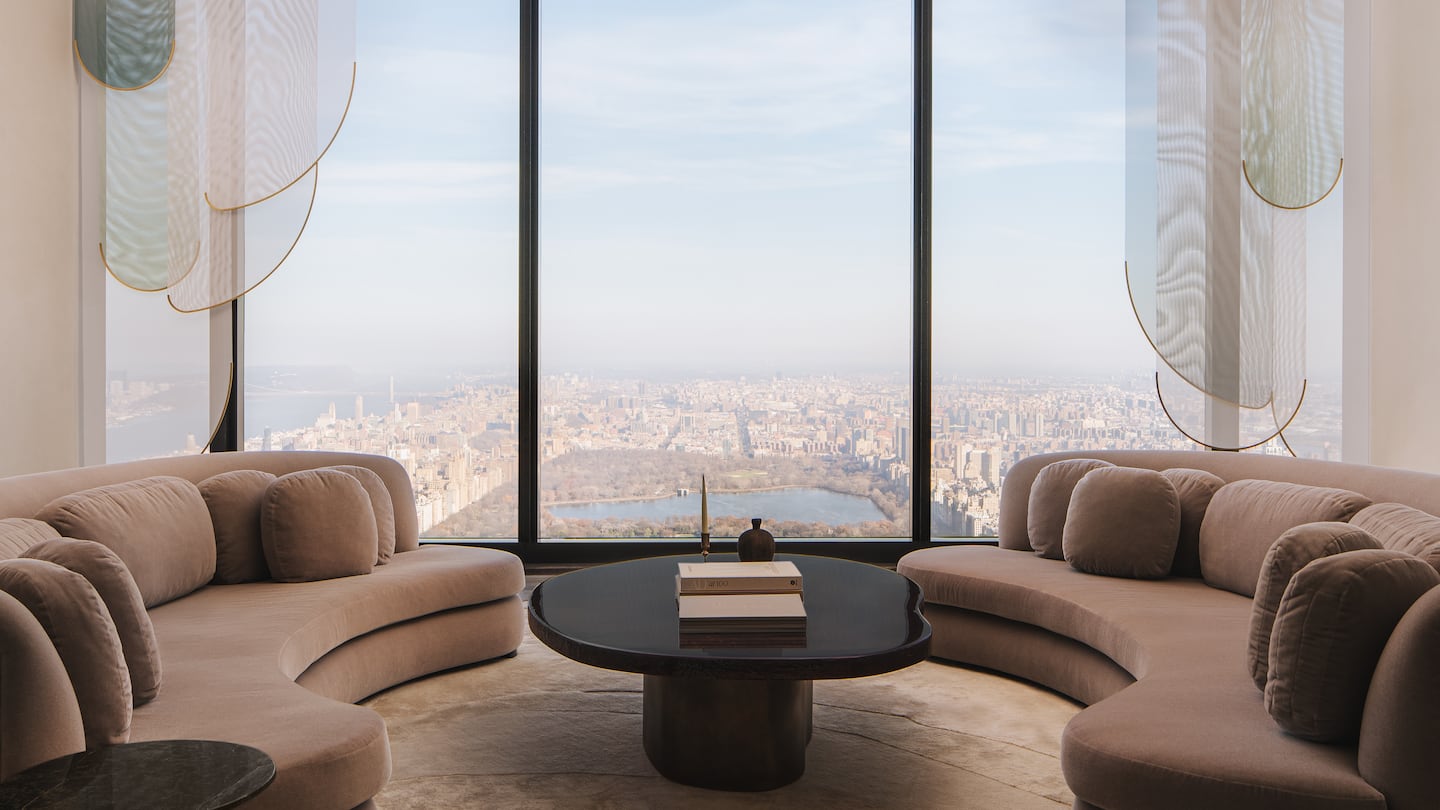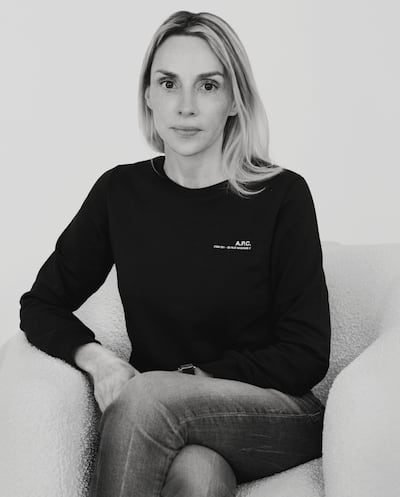
The Business of Fashion
Agenda-setting intelligence, analysis and advice for the global fashion community.

Agenda-setting intelligence, analysis and advice for the global fashion community.

In 2016, Invisible Collection launched as a luxury furniture sourcing platform. Selling contemporary, made-to-order designs, the platform hosts the work of over 200 architects and interior designers, including the likes of Charles Zana, Noé Duchaufour-Lawrance, Sophie Dries, Garcé & Dimofski, Studioparisien and Hamrei. In 2023, the platform achieved sales of $27 million.
The US market remains the Invisible Collection’s strongest region — and it has continued to perform well with the US economy avoiding recession and proving resilient, despite the waning post-pandemic luxury boom. Bloomberg reported US GDP grew 2.7 percent in 2023, up from 0.7 percent the previous year and US consumer spending increased by $46.7 billion, according to the Bureau of Economic Analysis.
The expectations of the Invisible Collection’s large US consumer base correlate well with the services the company offers, such as bespoke pieces and an increasingly personalised shopping experience. Today, 71 percent of US consumers expect personalised interactions when making purchases, according to McKinsey & Co. Indeed, BoF’s latest Case Study, ‘Selling Luxury to the 1%’, reports that the winning strategies employed by market leaders to court “VICs”, or very important clients, integrate exclusive experiences and one-of-a-kind, personalised products to foster greater loyalty.
The design platform is now eyeing physical retail expansion in the US, with plans for a showroom on the West Coast. At present, Invisible Collection has a retail footprint in New York as well as London and Paris, each store with its own distinct aesthetic character.
The platform has also partnered with French heritage institution Mobilier national, and Chanel’s Métiers d’art, the luxury fashion house’s celebration of their top-end suppliers and traditional craftsmanship. Among their international roster of artisans, design talent and interior studios, Invisible Collection champions the French design aesthetic, working closely with its workshops and craftspeople, designers and architects.

To learn more about how Invisible Collection engages US luxury consumers, BoF sits down with co-founder Isabelle Dubern-Mallevays to discuss growing this consumer base, bespoke product offerings and carving cultural niches.
I have always been struck by the in-depth knowledge American lifestyle journalists possess of the culture and history of European decorative arts. As a result, their readers are familiar with the work, projects and furniture of renowned French designers like Jean Royère, Pierre Chareau, Jean-Michel Frank, and their talented successors today, whom we curate and present together on Invisible Collection.
Renowned French design masters like Frank first made an impact in the US in the 1920s, through projects for Rockefeller in New York or Templeton Crocker in San Francisco. Later, French designers like Jacques Grange, François-Joseph Graf and, more recently, Charles Zana, Noé Duchaufour-Lawrance, Garcé & Dimofski, Charlotte Biltgen and Thierry Lemaire have emerged as stars of contemporary interior design and resonate strongly in the US. The concept of an interior decorator, later designer, was actually first coined in the US in the 1930s.
Americans have always been early adopters of design movements, whether in fashion or in decoration. These two disciplines share similar desirability, savoir-faire and often expertise. For example, Chanel’s “Métiers d’art” celebrates the brand’s specialty creators, including some dedicated to interior design such as Lesage Interiéurs, Studio MTX, Goossens and Maison Lemarié. We have presented these in our gallery in New York since its opening in 2022.
The French aesthetic has resonated with the US for over a century, but until recently, the curation and extensive selection of this furniture in one place was not readily available for the American consumer. As a result, the desire for the French or European aesthetic had grown in recent years, with an increasing interest in discovering, collecting and preserving furniture that tells powerful stories.
Americans have always been early adopters of design movements, whether in fashion or in decoration. These two disciplines share similar desirability, savoir-faire and often expertise.
When we founded Invisible Collection, we aimed to bridge this gap by showcasing top French designers such as Charles Zana and now over 200 others, enabling them to sell their furniture collections in the US. We provide our American clients the opportunity to discover and purchase exceptional pieces while offering an impeccable service, which has been our obsession from day one.

Ultimately, our American customers are, above all else, collectors who want to find furniture and objects with a strong culture and references, to create homes that reflect who they are while adding a twist of vintage furniture that we source for them.
Sustainability is important to all our clients, but especially the younger generation. By becoming a B-Corp, an American certification, we have also increased our dedication to sustainability, and social and environmental transparency. They expect that quality products come with this responsibility and, in working with a B-Corp company, they know we are doing our best to be socially responsible and careful about the impact we leave on the planet.
I also find that the lines between fashion, design and travel are becoming increasingly blurred for the younger US consumer. Design, like fashion, appeals to all the senses and is now viewed in a more nomadic way, thanks in part to social platforms which have made furniture once only known to design enthusiasts, much more accessible.
Eighty percent of orders on Invisible Collection are bespoke: this is the ultimate luxury. We work closely with French masters of craftsmanship and design, who perform painstaking crafts with the widest array of materials and finishes, and we provide an expanding offering of collections. Since our inception, we have partnered with these workshops, many of which are family-run and have grown alongside Invisible Collection, facilitating this high level of customisation.
This approach has enabled us to take customisation, which is highly sought after by American customers, to the next level. The demand for personalisation grew during the period of confinement in Covid-19 lockdowns, during which time many homeowners opted to completely renovate their residences. To us, this trend signals a new Gilded Age in the US, with the decorative arts flourishing with exceptional know-how and creativity.
Our galleries are presented as private homes that resonate with their location and the local atmosphere — our townhouse in New York differs from our 19th-century-style gallery in Paris and our mews house flagship in London. We have also designed Invisible Collection’s retail spaces with the contemporary art collectors in mind, as they come to the spaces looking for furniture to complement their collections. Our retail pop-ups are also designed to carry forward this idea of design as a cultural experience.
Our galleries are presented as private homes that resonate with their location and the local atmosphere — our townhouse in New York differs from our 19th-century-style gallery in Paris.
We also celebrate specific crafts and their cultural history in France. For example, over the past three years, twice a year, we have also exhibited a selection of furniture from Invisible Collection designers in Paris at Féau Boiseries, a 1500-square metre former workshop, where one family has collected almost 10,000 pieces of historic decorative panels for 150 years. This location boasts the finest antique panelling archive in the world, with woodwork from Versailles to twentieth century panelling by Jean Michel Frank and Emilio Terry.
We have also exhibited with both Chanel’s Métiers d’art and Mobilier national. Centred on culture and know-how, these partnerships have been hugely successful.
At an event with Sotheby’s in Los Angeles two years ago, we presented our contemporary furniture with seminal pieces by Les Lalanne — a mix tailored specifically to a Californian audience. The atmosphere was relaxed and allowed for a dialogue between the pieces. This is exactly what we aim to achieve — blending art and vintage furniture with contemporary pieces. It allowed the vintage furniture to feel more suited to the West Coast lifestyle.
We will debut our first Los Angeles residency during Frieze Week, where we plan to open a gallery soon. I personally have a special fondness for LA, for its cool vibe, fantastic architecture and dynamic ethos. The LA environment is always open to change and experimentation, and I believe the French aesthetic we champion will blend perfectly.
This is a sponsored feature paid for by Invisible Collection as part of a BoF partnership.
Vying for attention from increasingly sophisticated consumers impacted by the downturn, fashion brands and retailers need to deliver exceptional in-store experiences. To discover how store interior design is innovating to increase sales and community engagement, BoF sits down with Invisible Collection co-founder Isabelle Dubern-Mallevays.
The co-founders of the renowned furniture brand share how they are driving triple-digit sales growth by continuing to focus on human interactions with clients, on and offline.
The designer has always been an arch perfectionist, a quality that has been central to his success but which clashes with the demands on creative directors today, writes Imran Amed.
This week, Prada and Miu Miu reported strong sales as LVMH slowed and Kering retreated sharply. In fashion’s so-called “quiet luxury” moment, consumers may care less about whether products have logos and more about what those logos stand for.
The luxury goods maker is seeking pricing harmonisation across the globe, and adjusts prices in different markets to ensure that the company is”fair to all [its] clients everywhere,” CEO Leena Nair said.
Hermes saw Chinese buyers snap up its luxury products as the Kelly bag maker showed its resilience amid a broader slowdown in demand for the sector.